Existing for only 7 years (1400-1407) and considered the shortest dynasty in Vietnam's feudal history, the Ho Dynasty left humanity with the most unique stone citadel in Southeast Asia.
To create a basis for preserving and further consolidating the great historical values of the Ho Dynasty Citadel, over the past many years, the Ministry of Culture, Sports and Tourism (MCST) in coordination with the People's Committee of Thanh Hoa province has conducted nearly 20 excavations, thereby discovering more data and traces of extremely great significance for Vietnamese archaeology.
Excavation of Ho Dynasty Citadel
The Royal Road - A Landmark Discovery
Since the Ho Dynasty Citadel was recognized by UNESCO as a world cultural heritage (in 2011), 10 excavations have taken place here. If calculated broadly, from 2004 to now, a total of 20 large and small excavations have been carried out.
Mr. Truong Hoai Nam, Deputy Director of the Center for Historical Research and Cultural Heritage Conservation of Thanh Hoa province, said that the excavations have discovered many important vestiges such as: the central architectural cluster of the King's foundation; the architectural cluster to the southeast of the Inner Citadel; vestiges of the 4 moats; vestiges of the Royal Road and vestiges of the courtyard of the South Gate Square during the Ho Dynasty; vestiges of the Nam Giao altar...
"Most excavations have made very important discoveries, proving the global prominence of the heritage. Among them, the Royal Road remains are the roads that made a great impression on experts from the International Council on Monuments and Sites (ICOMOS) when they came to check the authenticity of the heritage site," said Mr. Nam.
The Royal Road, which was discovered in front of the South Gate during the excavation, consists of three parallel lanes, the main lane and two side lanes. The main lane runs through the gate and runs to the North and South. The road is paved mainly with large limestone blocks of various shapes: rectangles, squares, triangles, trapezoids, diamonds, etc.
The paving stones were mostly carefully crafted to create a flat surface for the road, and the surfaces of the stones all had clear chisel marks similar to the stones used to build the wall.
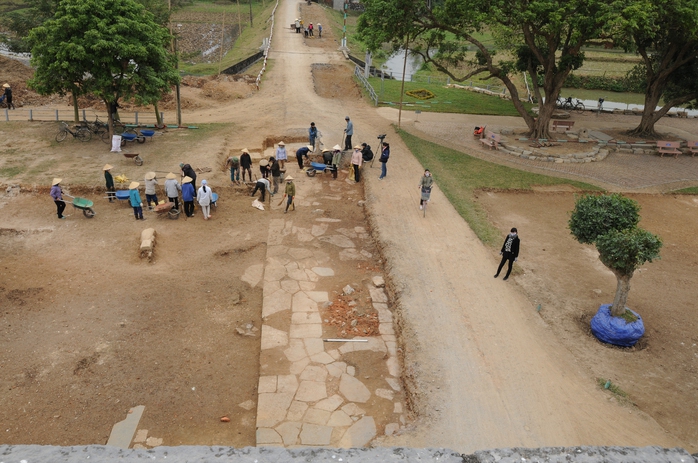
The Royal Road was revealed during excavation.
According to Mr. Nguyen Ba Linh, Director of the Ho Dynasty Citadel Heritage Conservation Center, in addition to the above important discoveries, archaeologists also researched many other locations around the Ho Dynasty Citadel area such as: cutting the Northeast wall to study the construction techniques, studying the La Thanh construction techniques, studying the stone mining and processing techniques at An Ton stone field, Xuan Dai relic and exploring the location of Tran Khat Chan temple, Con Nguc relic, Go Ma... to find answers to the process of building this stone citadel.
"The Ho Dynasty Citadel was built by Ho Quy Ly in 1397. According to the book Dai Viet Su Ky Toan Thu, this stone citadel was built within 3 months. Through excavations, stone processing sites were found, hundreds of large and small stone marbles have reinforced the hypothesis that the ancient workers used them as rollers to winch stones from the quarry area (about 5 km from the citadel construction site). Combined with winches and earthworks, people lifted tons of stone slabs up high to build the citadel. In addition, historians have found about 300 places in the country that contributed bricks to build the Tay Do citadel, thereby partly proving and explaining the big question of history: why Ho Quy Ly was able to build the Tay Do citadel in just 3 months," said Mr. Linh.
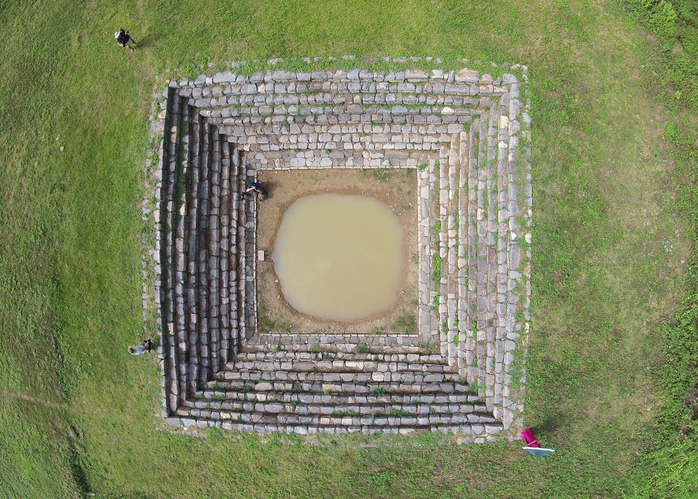
The King's Well in the Ho Dynasty Citadel archaeological site
Restoring the oldest capital in Southeast Asia
Among the 10 large and small excavations since the Ho Dynasty Citadel became a world heritage site, the excavation from 2020-2021 is considered the largest excavation in the history of Vietnamese archaeology with an area of 25,000 m2. This excavation discovered 4 clusters of vestiges dating back to the Tran - Ho dynasties; 2 clusters of architecture from the early Le dynasty; 1 cluster of architecture from the Le Trung Hung dynasty with over 20 architectural units.
Associate Professor, Dr. Tong Trung Tin, Chairman of the Vietnam Archaeological Association - a passionate person who has been working with the Ho Dynasty Citadel relic for the past 10 years to find answers to many mysterious and unclear things - was also quite surprised by the discoveries that were found.
According to Associate Professor, Dr. Tong Trung Tin, the excavation from 2020-2021 has obtained extremely important results in identifying unique architectural vestiges, of the largest scale to date in the history of ancient Vietnamese architecture research in the central area of Ho Dynasty Citadel (also known as the King's foundation).
"According to initial calculations combined with the King's foundation site, archaeologists believe that it could be the vestiges of the Main Palace of Tay Do Citadel. If so, this is the oldest vestige of the Main Palace in the history of the Vietnamese Capital discovered to date," Associate Professor, Dr. Tong Trung Tin affirmed.
Professor and Doctor of Science Luu Tran Tieu, Chairman of the National Cultural Heritage Council, commented that the discovery of the Royal Road is extremely important, it is the foundation from which subsequent excavations have revealed many vestiges of great significance to archaeology.
From these excavations, the center will gradually develop a plan to restore, restore and protect the landscape, diversifying conservation solutions like the case of Nara (Japan). If done well and scientifically, we can gradually understand and restore the oldest capital in Southeast Asia, gradually turning the heritage into one of the most outstanding cultural heritages of Vietnam with strong appeal to the domestic and international public in order to preserve and protect the integrity of the heritage site in accordance with the International Conventions for a world heritage site of the stature of the Ho Dynasty Citadel.
According to historical records, in the years 1396-1398, our country was at risk of being invaded by foreign invaders from both ends of the country. In the North, the Ming army invaded and occupied the border. In the South, the Champa army also plotted to annex our country.
At this time, Ho Quy Ly was a general under the Tran Dynasty, and used a soft diplomatic strategy to delay the troops from both sides. In the country, he stood up to suppress the uprisings of the rebels, advising the Tran Dynasty king and his subjects to move the capital from Thang Long to Thanh Hoa to ensure long-term safety.
When entering Thanh Hoa, Ho Quy Ly built Bao Thanh Palace (ie Ly Palace of Ho Dynasty, in Ha Dong Commune, Ha Trung District today) on a large area. The project was invested in and built elaborately like a miniature Thang Long Citadel to welcome King Tran to Thanh Hoa, preparing for the construction of a new capital, Tay Do Citadel (Ho Dynasty Citadel today).
In 1400, Ho Quy Ly dethroned the Tran Dynasty, established the Ho Dynasty, and named the country Dai Ngu. In 1407, Ho Quy Ly and his son, Ho Han Thuong, were captured by the Ming army. The Ho Dynasty was destroyed. Although it only existed for 7 years and is considered the shortest feudal dynasty in Vietnamese history, the Ho Dynasty left its mark in history, especially the comprehensive reform of the country, which is considered to have practical value and be ahead of its time.
Source: https://nld.com.vn/phong-su-but-ky/nghe-tieng-ngan-xua-vong-ve-tim-loi-giai-cho-nhieu-dieu-ky-bi-o-thanh-nha-ho-20230402161127314.htm


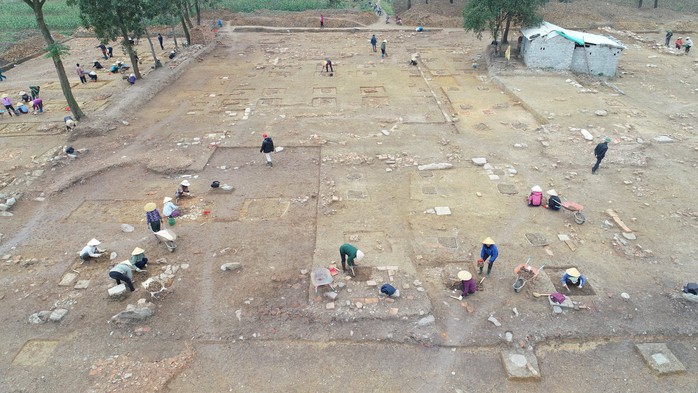
![[Photo] General Secretary To Lam begins official visit to Russia and attends the 80th Anniversary of Victory over Fascism](https://vphoto.vietnam.vn/thumb/1200x675/vietnam/resource/IMAGE/2025/5/8/5d2566d7f67d4a1e9b88bc677831ec9d)
![[Photo] National Assembly Chairman Tran Thanh Man chairs the meeting of the Subcommittee on Documents of the First National Assembly Party Congress](https://vphoto.vietnam.vn/thumb/1200x675/vietnam/resource/IMAGE/2025/5/8/72b19a73d94a4affab411fd8c87f4f8d)
![[Photo] Prime Minister Pham Minh Chinh meets with the Policy Advisory Council on Private Economic Development](https://vphoto.vietnam.vn/thumb/1200x675/vietnam/resource/IMAGE/2025/5/8/387da60b85cc489ab2aed8442fc3b14a)
![[Photo] President Luong Cuong presents the decision to appoint Deputy Head of the Office of the President](https://vphoto.vietnam.vn/thumb/1200x675/vietnam/resource/IMAGE/2025/5/8/501f8ee192f3476ab9f7579c57b423ad)

![[Photo] General Secretary concludes visit to Azerbaijan, departs for visit to Russian Federation](https://vphoto.vietnam.vn/thumb/1200x675/vietnam/resource/IMAGE/2025/5/8/7a135ad280314b66917ad278ce0e26fa)
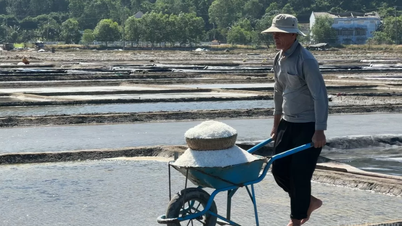

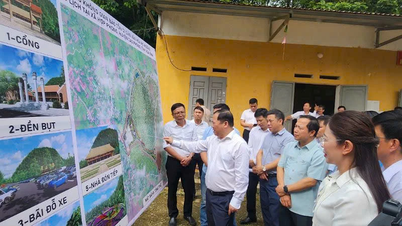

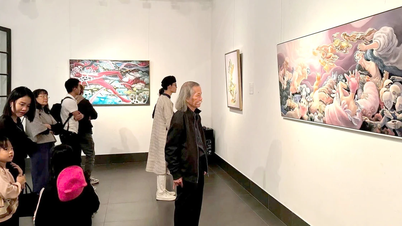


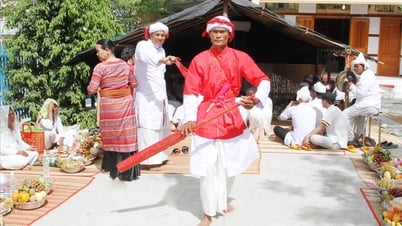





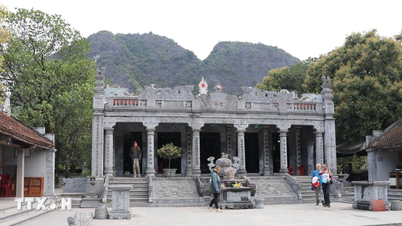
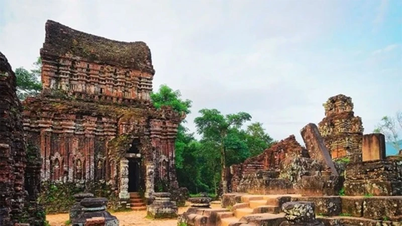

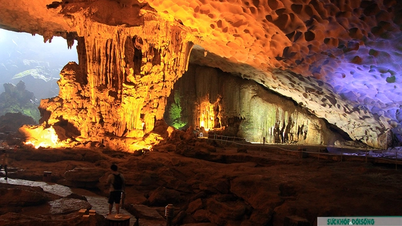








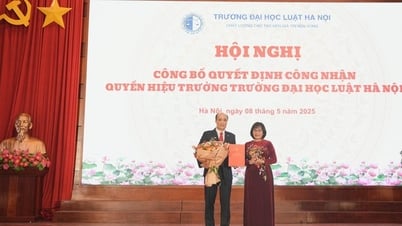












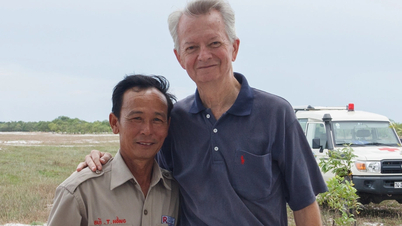

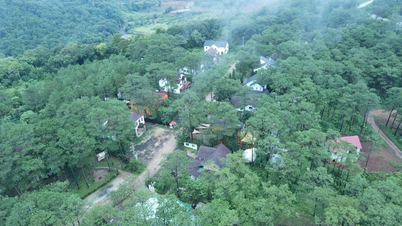





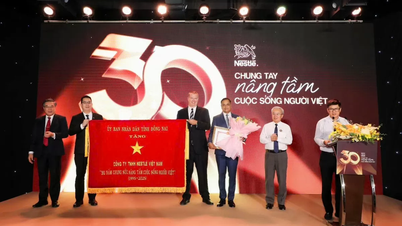




![[Photo] Prime Minister Pham Minh Chinh talks on the phone with Singaporean Prime Minister Lawrence Wong](https://vphoto.vietnam.vn/thumb/402x226/vietnam/resource/IMAGE/2025/5/8/e2eab082d9bc4fc4a360b28fa0ab94de)




























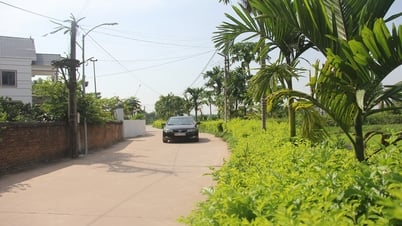





Comment (0)